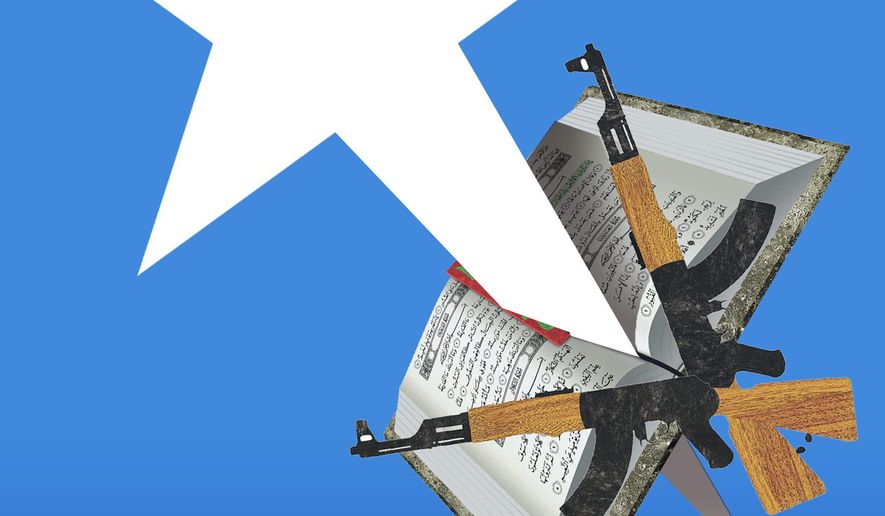OPINION:
According to U.S. Africa Command (AFRICOM), there have been 18 airstrikes to date this year in Somalia — more than four times the average for the previous seven years. At the same time, the number of U.S. forces in Somalia has more than doubled. The target of the U.S. military in Somalia is al-Shabab, an Islamist militant group allied with al Qaeda and now considered the deadliest terrorist organization in Africa.
The Islamic State (ISIS) has also established a small presence in Somalia and a break-away group of al-Shabab has pledged allegiance to ISIS, but the two groups are more in competition with each other for influence in Somalia — which demonstrates that radical Islam is not monolithic.
Certainly, al-Shabab is a threat to the Somali government and the civilians killed by its attacks. The worst attack was in October when a truck bomb packed with several hundred kilograms of military grade, homemade explosives was used to kill more than 300 people and injure hundreds more in the city center of Mogadishu — making it one of the deadliest terrorist attacks anywhere in the world.
According to the U.S. mission in Somalia, “Such cowardly attacks reinvigorate the commitment of the United States to assist our Somali and African Union partners to combat the scourge of terrorism.” But an amorphous “scourge of terrorism” — especially in Somalia — is not a direct threat to America that warrants the sacrifice of U.S. lives — such as U.S. Navy SEAL Senior Chief Kyle Milliken, who was killed on a mission in Somalia in early May.
Yet, every radical Islamist everywhere in the world is not a direct threat to the United States. ISIS is primarily a threat in Iraq and Syria. Boko Haram is a threat in Nigeria. al-Shabab is a threat in Somalia. As such, it is up to those countries and their neighbors — who are most imperiled and have the most to lose — to take primary responsibility for combating the terrorist threats in their own backyards.
More important, we must recognize that the threat that al-Shabab really represents is the civil war raging within Islam. Ultimately, al-Shabab — like al Qaeda, ISIS, and Boko Haram — is at war with its fellow Muslims who do not agree with and do not want to live by their radical version of Islam. Involving the U.S. military only puts us in the middle of their civil war — U.S. troops should stop terrorists from killing Americans, not from killing each other.
And as brutally violent as al-Shabab is, it is not targeting America as al Qaeda did on Sept. 11, 2001.
Indeed, since 9/11 there hasn’t been a successful attack by a foreign terrorist organization. The real threat has been lone wolf and largely homegrown terrorism.
According to the Global Terrorism Index, since 2006, 98 percent of all deaths from terrorism in the U.S. have been from attacks carried out by lone actors, resulting in 156 deaths. And according to the New America Foundation, of those accused of jihadist related terrorism crimes in the U.S., more than 80 percent of them were either U.S. citizens or U.S. legal residents, and about half were American born citizens.
The data does not bear out the logic that killing would-be terrorists overseas in places like Somalia will make us inherently safer. So continuing to pursue such a strategy is folly.
In 1993, the U.S. military was in Somalia on a humanitarian intervention mission that was neither vital nor important to U.S. national security. The mission resulted in the tragic deaths of 18 U.S. Army Rangers. Today, the U.S. military is in Somalia to help Somali President Mohamed Abdullahi Farmajo wage a war against al-Shabab — a war neither vital nor important to U.S. national security. If the first time was simply a tragedy, the second time is foolhardy.
• Charles V. Pena, a senior fellow with Defense Priorities, is the former director of defense policy studies at the Cato Institute and author of “Winning the Un-War: A New Strategy for the War on Terrorism” (Potomac Books).




Please read our comment policy before commenting.